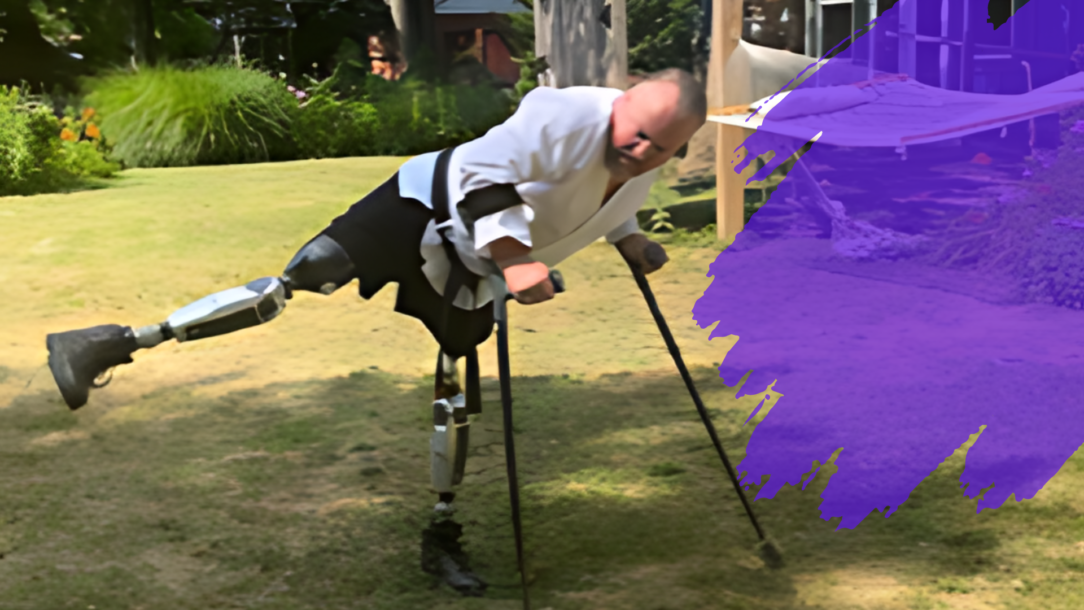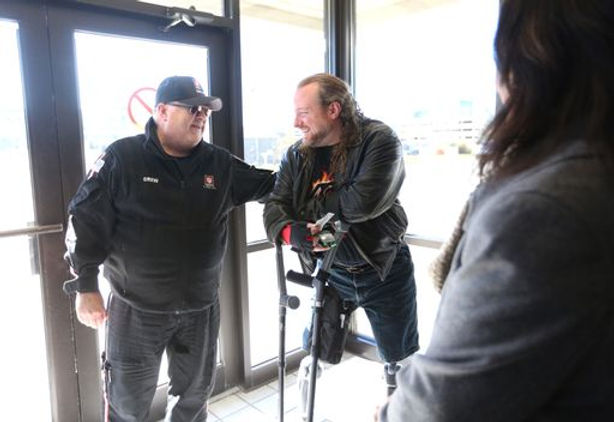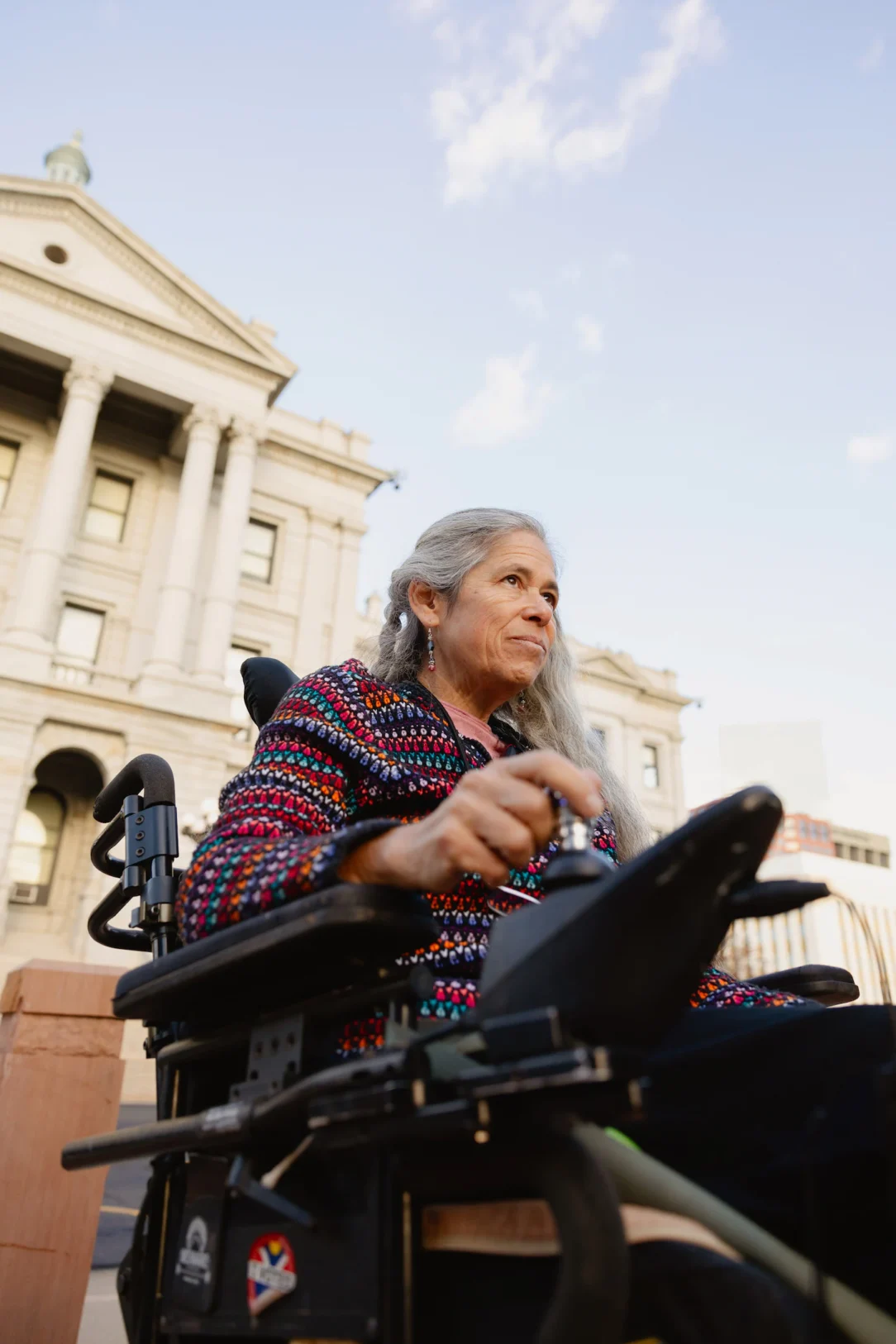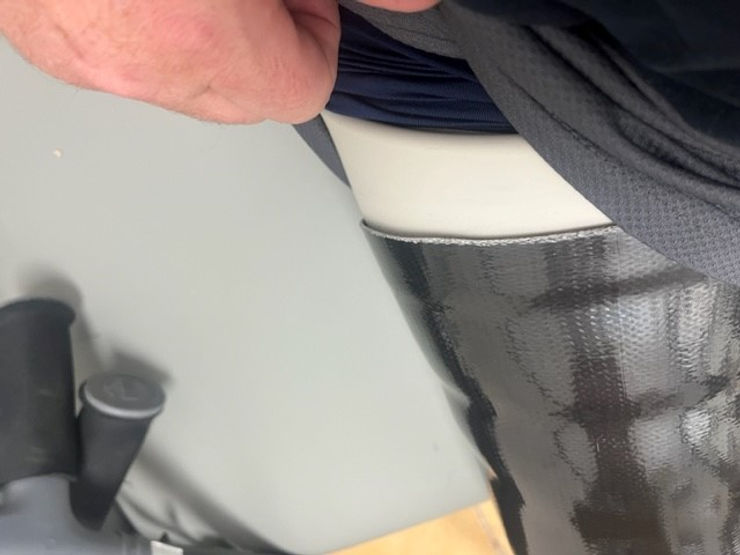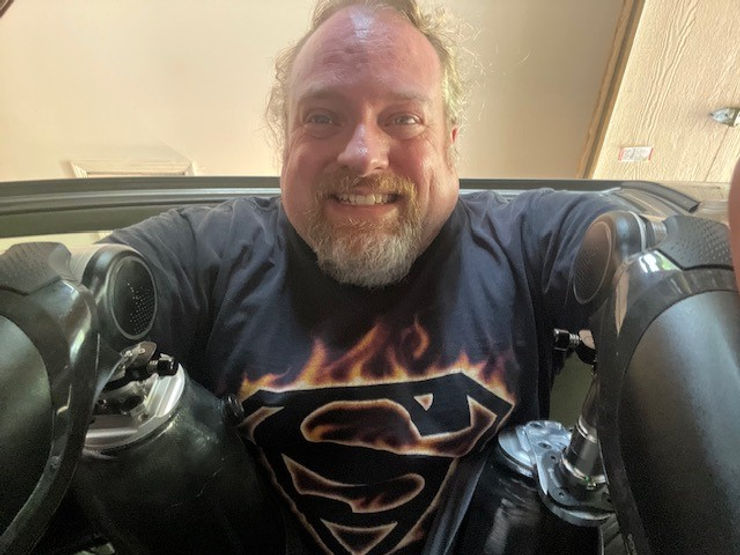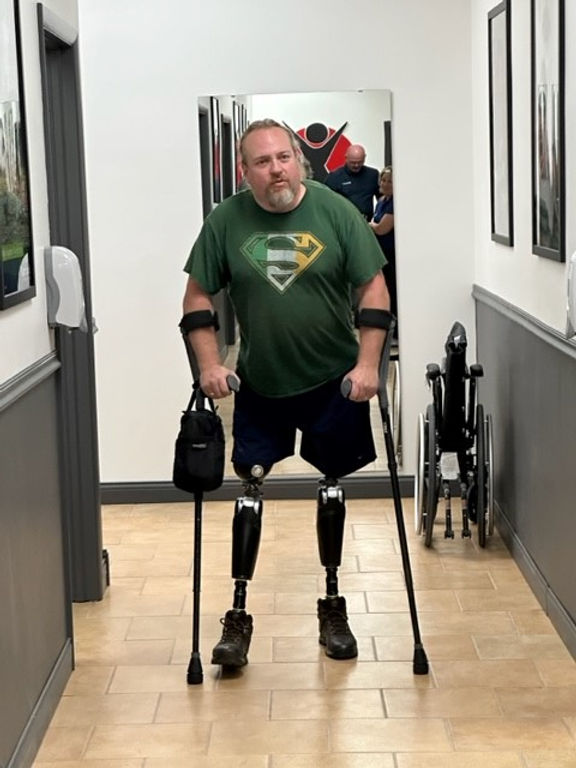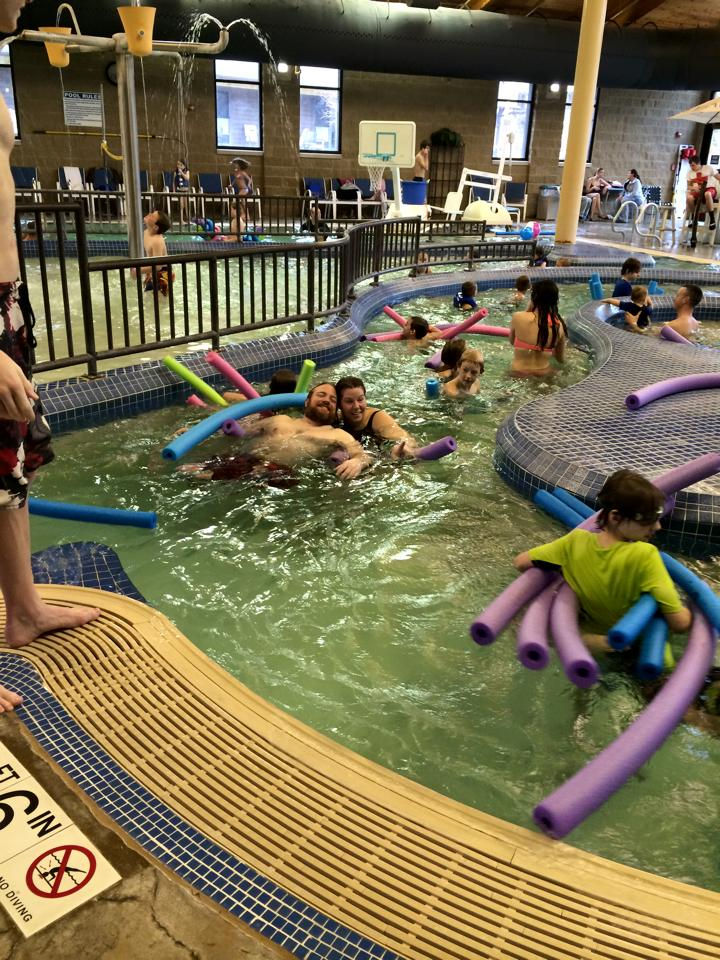The story below is the original, unedited version of the article that was published in the Indiana Disability Justice Hub earlier this month. That article, and many others focused on preventing violence against people with disabilities can be found at: Disability Justice and Violence Prevention Resource Hub – Created by Survivors of Violence with Disabilities for People with Disabilities & Our Allies (indisabilityjustice.org)
When I was a year old my parents moved into a house in an economically depressed neighborhood. We lived two blocks away from the public elementary school that my older sister and I would attend. I walked to school every day with my big sister until she moved on to middle school, as I was entering 5th grade. There were lots of other kids from our neighborhood who walked to school then too.
I was regularly picked on for being a scrawny white boy with coppery red hair and glasses. I had the quick temper to match the red hair. I also had a habit of sticking my nose in where it didn’t belong. When the bullies were picking on other kids, I tended to put myself in the middle…especially if their victim was a girl. This led to a lot of fights…several that I started…none that I could finish.
I got good at throwing the first punch and running as fast as I could. Afterall, home base was only two blocks away from the school yard. I was fast, but I wasn’t always the fastest and would occasionally come home with scrapes and bruises, especially at the beginning of my 5th grade year. Eventually, my parents had enough of it.
The way I remember it, the day after I’d come home with a particularly large number of bruises from several bullies who had caught up with me about a half block away from home, my dad took me to see Poltergeist in the movie theatre. It was a special treat to help me feel better…though on the way home I got suspicious when my dad drove past our normal turn. Dad pulled into a parking lot outside of a small building near 39th and Keystone. We went inside and were greeted by a large stern looking man with sandy blond hair and a short beard, wearing what looked like white pajamas with a black fabric belt knotted at his waist. No one else appeared to be around.
The man asked me to have a seat while he and my dad “discussed business”. He ushered my dad into his office, and I sat on a small row of chairs near the entrance. There were plaques and pictures on the dark brown walls showing the man in fights, holding awards, or with his arm around important looking people. The small waiting area that I was sitting in opened onto a large well-lit room with a green mat that covered the floor. At the far end of the room there was a pegboard on the wall with strange looking weapons hanging from it…weapons you might see in a Ninja movie. I had no idea what was going on, but I had a terrible feeling that my dad was selling me.
After what seemed like an eternity, the man opened his office and asked me to come inside. I sat down next to my dad and the man took his chair on the other side of a huge desk. He looked at me and said, “Your dad tells me you’ve been getting into fights.” I nodded. “Your parents would like for me to teach you how to defend yourself, are you committed to learning?”
My first reaction was relief that I wasn’t getting sold, followed by shock that my parents wanted me to learn Karate. I smiled as I began to imagine finishing fights instead of running…
“Yes Sir,” I replied.
He smiled back at me and stuck his open hand out across the desk for me to shake. As his giant hand enveloped mine in a firm squeeze, he smiled and said, “You will call me Sensei”. (Which means teacher).
While I did learn to defend myself, what I really learned was how to control my temper and not get into fights. Since that day I have only needed to use Karate against others on five occasions…three times to defend myself or others, once to stop a fight before it ever began, and once in college to take the car keys away from a friend who’d had too much to drink. For seven years, on most days after school and throughout the summers, I would go to the Dojo (Karate School) and train. Somehow, I also found time for trombone practice, marching band, jazz band, show choir, and time with my friends, but from 5th grade through my senior year of high school I spent a lot of time on that mat practicing the martial art of Shorei-Goju Ryu. I earned my Black-Belt before I was 16. (Many people believe this is the highest rank, but it’s really the middle, representing the point at which you begin to know something).
I was at the Dojo almost daily, reciting a creed to focus on strength of the body, knowledge of the mind, and honesty of the heart and practicing physical conditioning, style, form, and self-defense until inevitably, life took a major step forward. After I moved an hour away to attend college, with no car on campus, I continued practicing on my own by running katas (choreographed martial arts forms to practice and keep the body, mind, and spirit healthy) in a horticulture garden near my dorm, but eventually college life became the priority and my focus on karate diminished. I stopped practicing. My connection with my master Sensei and the other teachers at his school waned until life took that next big step forward, a career that took me out of state.
A decade later, my belts were nice memorabilia of my youth to decorate my walls. I still knew how to defend myself, but my memory of each kata was buried underneath a decade of hotel management work. Back home, the Dojo moved, expanded, and eventually shut down. Life took the next very unexpected leap.
During my hour-long commute home from work, over eighteen years ago, a sixteen-year-old driver turned left in front of me on a dark county road. I wound up trapped in a crumpled and burning Jeep Wrangler next to a cornfield. The other driver had a few minor injuries, and was in shock, but was coherent enough to call 911. While there were no witnesses, amazing people stopped and risked their lives to pull me from the burning wreckage before EMS could arrive. Six weeks later I awoke from a medically induced coma to learn that, in addition to other injuries that would ultimately heal, both of my legs had been amputated from above each knee.
I remember those early days in the burn unit, thinking about my youth and all of the effort that had gone in to learning Shorei-Goju Ryu. Something valuable that I had let slip away as my career took prominence in my adult life, but something I had always thought I would return to one day. This was now gone…I told myself…this future option had been taken with my legs and all of that effort to learn Karate in my youth felt wasted. Then I began outpatient Physical Therapy.
As I began learning to walk on prosthetics, my Physical Therapist would regularly comment on my overall body awareness and balance (which I didn’t feel was great, but she was impressed). She attributed this to my martial arts background, and I really couldn’t argue. The day that she worked with me on how to fall safely…which is tremendously important for a person walking on two above knee prosthetics with crutches…she was stunned when I just let go of both crutches and fell forward, landing with my forearms taking most of the impact and protecting my face and chest at the same time. It was a bittersweet benefit, but it gave a little value back to that time of my life…relieved a little of the loss. There were other benefits too.
Adapting to life as a person with Disabilities is hard…it’s the hardest thing that I have ever had to do and, aside from the physical actions of punching and kicking, a lot of what I learned in Karate was about self-discipline, motivation, determination, and resiliency which absolutely helped me adjust to living life using a wheelchair, or prosthetics with crutches when needed or wanted. I was using what I had learned to reach a black-belt rank in Shorei-Goju Ryu, every day now, to deal with the emotional and physical trauma of life with a disability.
That said, I wasn’t practicing karate, I was just subconsciously drawing on its lessons to reinforce my efforts to adapt to life as a bi-lateral above knee amputee. I had lost sight of the healthy body, mind, and spirit aspect of karate and allowed my incorrect perception of my body as “broken” to prevent me from being able to wrap my mind around the concept of adapting karate to my disability…and that oppressed my spirit.
Over the course of the first decade of my experience as a Person with Disabilities I led a fairly sedentary life. Thinking that the physical effort of moving my body from couch to wheelchair to toilet or bed or car or even the floor, and the effort that it takes to walk regularly with prosthetics (400% more energy than the average human expends to ambulate) …none of which seems sedentary…was enough physical exercise to stay healthy. I was wrong. I developed Type Two Diabetes and severe Sleep Apnea as a direct result of not exercising or maintaining a healthy diet. I began swimming regularly, which helps, but I still require medicine to keep the Diabetes under control and a CPAP to combat the severe Sleep Apnea.
After acquiring my disabilities, I eventually noticed my old temper coming back, which I initially ignored as an indicator of my spiritual and emotional health. Anxiety and depression were presenting my neurodiversity, which needed to be acknowledged. Though I have adapted my home and learned to utilize accessible assistive technology and public accommodations to stay engaged in society, things that wouldn’t have bothered me at all before I lost my legs were now tremendously aggravating, and minor inconveniences began to feel like major obstacles. Add the phantom pains to the mix…random nerve pain that varies in frequency and intensity to the extremes, radiating from the parts of my body that have now been gone for 18 years…and my pleasant demeanor is more often a façade than reality.
My confidence still tends to put me in questionable situations, as I tend to forget that I have a disability. One night, about three years after I had lost my legs, I found myself at a gas station in a questionable part of town at 2am. Prior to losing my legs, I would not have been concerned about the time of night or neighborhood and didn’t give it a second thought as I pulled into the gas station that night.
I was wearing an advanced pair of prosthetics, standing by my car pumping gas. No one else appeared to be around. A dirty looking man in a denim jacket with his hands concealed in his pockets walked out from behind the gas station and headed straight towards me. The hose was blocking my path to get back in my car and I only had one of my crutches with me. Though it had been decades since I had practiced Karate, I began thinking through ways that I could quickly knock this person to the ground and then get the weight of my prosthetics on him before he could draw a weapon, maybe use my crutch to restrain him if needed.
As he drew near, his right hand came out of his pocket and opened, empty, as he thrust it toward me while saying “I’m a Physical Therapist and it’s amazing to see you out pumping your own gas! I’d really like to shake your hand!” I shook his hand, shared a brief conversation with him about my legs and independence, then we went our separate ways. As I drove away, I realized how very vulnerable I had felt and been. This experience changed the way I approached many aspects of life, especially travel and entertainment in unfamiliar areas, after that night.
Years later, as a result of COVID, I began doing outreach work for a local non-profit during that time when most of us were trying to stay as far from each other as possible. Through a random string of events this led me to virtually assist a young woman with Down Syndrome, who lived in another state, with her senior project on Martial Arts. She wanted to do videos with me in Indiana, taking her through a short class demonstrating karate from the wheelchair (punches and blocks), while she would also demonstrate the kicks, stances, and other movements from her school in Georgia. She wanted us to wear a traditional karate uniform called a “gi”.
For the first time in almost 30 years, I pulled out my gi and tried to put it on…I don’t know what possessed me to think it might fit. To add insult to injury, I also apparently had to learn from experience that my black-belt (last worn at age 18) would no longer fit around my waist either. I ordered a gi and belt that would fit and did several videos with the young woman demonstrating basic karate techniques. She graduated, and after helping her with this project, I found myself asking the question “how do I really modify this for my 48-year-old bi-lateral above knee amputee body?”
I knew I would need help, someone who could work with me on the katas that I had long since forgotten, as these would provide a framework for adapting, modifying, and once again practicing the martial art style of Shorei-Goju Ryu. With a bit of detective work, I was able to connect with the Sensei from our dojo who had worked most often with me during the seven years of my life that I spent there. He was still in the area and happy to reconnect.
We began with the basics, both in the wheelchair and standing on my prosthetic legs with balance support from forearm crutches, to get a sense of my movement. In the wheelchair I can comfortably work on punches and blocks and focus on form, but there are no kicks. When practicing a kata that includes kicks, I will substitute a punch or a block for a kick where appropriate. When using my prosthetics, I perform the kicks to the best of my ability, allowing for the restrictions caused by the weight and design of my prosthetics, rather than being frustrated by them. Some of the stances and transitions also need to be modified to account for my mobility. The forearm crutches can encumber my punches and blocks but can also be incorporated as weapons for punching and blocking, when necessary, which minimizes that encumbrance.
For the past two and a half years my Sensei has been helping me draw each kata that I learned in my youth out of my memory…it’s like walking through a dream…and then works with me to modify the kata to accommodate my disability while staying true to the style and form. We do this both standing and sitting to adapt for either situation. We do not only work on the choreographed katas, but also occasionally work on self-defense, wristlocks, armlocks, etc. We’ve even begun working on weapons training with a modified (shortened) Bo staff and a pair of Sais…which I only use in the wheelchair, as my balance on prosthetics will not allow for safe manipulation of the Bo Staff or Sai.
Re-learning Shorei-Goju Ryu as an adult has been a mind opening spiritual experience as well as a physical one. I have found myself more in tune with my own body and understand aspects of the martial arts in ways that I could never embrace as a teenager. My balance and endurance have improved dramatically, though I do still need the crutches for safety and mobility…and cannot do any wide arm movements above my head…my confidence in movement continues to grow. My flexibility, while not wonderful, is also improving gradually. Regarding my emotional and spiritual health, I find that my “zen” is returning. I am once more able to keep my temper under control and do not allow it to rise when agitated, allowing me to keep a clearer head when I do find myself in tense situations.
Re-focusing some of my time and effort on martial arts has provided tremendous benefits to my physical, mental, and spiritual health. Adapting Martial Arts has been a reminder to me to look at every challenge with the question “how can I…?” instead of the statement “I can’t…ever again”. It is also a reminder to accept what is “different” and redefine the goals if needed. We recognize that I have a disability and will not be able to get away from a fight easily, so we focus on ways to defend myself while quickly mitigating an attacker. My approach to self-defense is different based upon whether I have my prosthetics on, am standing or sitting, have my crutches in hand or not, using the wheelchair without my prosthetics, etc. These conditions are unique to me and so my practice of martial arts is also unique.
These are important aspects that, when a person with a disability has thought them through, can dramatically impact their awareness of their surroundings and comfort level in society. Will I be able to defend myself or my loved ones if a Marvel movie fight scene spontaneously erupts around me? Doubtful, but I do have an unexpected edge if ever attacked, and my restored “zen” is a key tool to avoiding such situations in the first place. Most importantly, by practicing and adapting Shorei-Goju Ryu, I have redefined my perception of a healthy body, mind, and spirit in a way that is inclusive of my disabilities, and I have an adaptive avenue to further develop those aspects of life.
I would strongly encourage any person with a disability to explore adaptive martial arts. There are benefits for anyone, regardless of the nature of their disabilities. People with intellectual and developmental disabilities will find the routine of adaptive martial arts to be accessible physical exercise that also helps build confidence, independence, and improves personal safety. People who experience neurodiversity can find that practicing martial arts will provide focus and additional coping mechanisms. Someone who has complete paralysis can still learn the katas and run them in a mental space to exercise the mind and focus the spirit.
Martial Arts can be adapted for any person with any disability and modified as the individual’s skills progress. The benefits begin with accepting your entire self and redefining your own concepts of a healthy body, mind, and spirit in a way that incorporates your disabilities as part of your healthy state, not something working against it. Learning martial arts can help you face life with adaptability and resiliency, both of which are vital aspects of the disability experience. Demonstrations can be seen on the Adaptive Karate page at https://www.walkingspirit.org.

